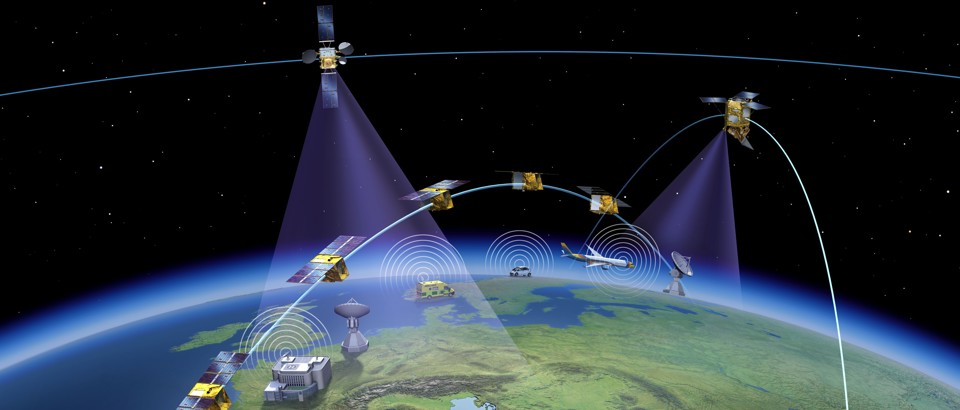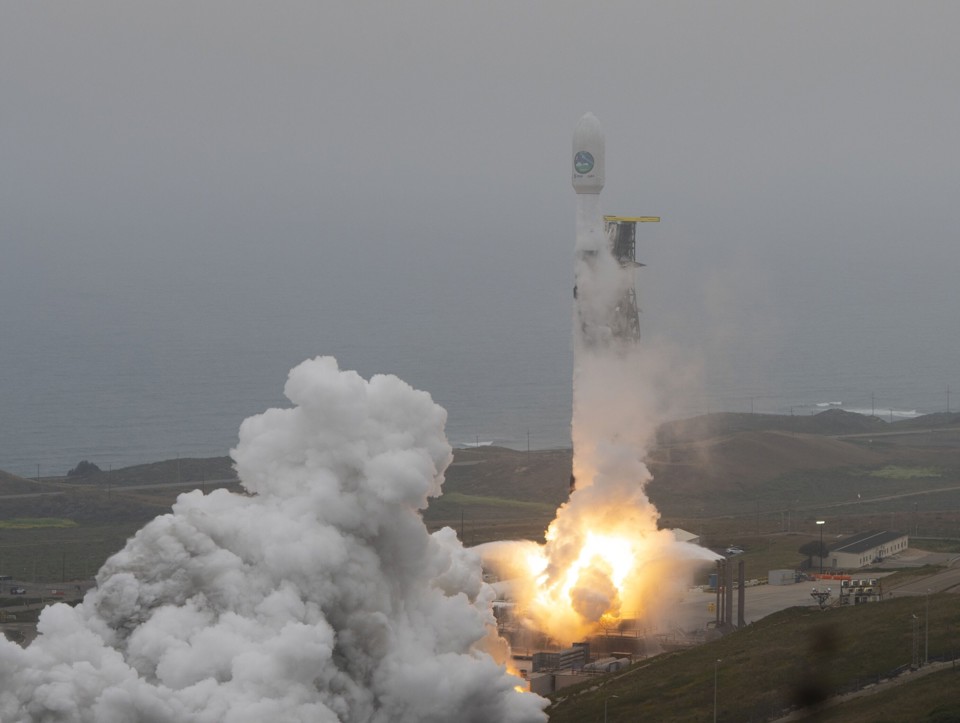Empowering EarthCARE Mission
The EarthCARE Mission seeks to enhance our understanding of atmospheric processes and climate dynamics.
As part of the European Space Agency's (ESA) ambitious FutureEO program, EarthCARE (Earth Clouds, Aerosols, and Radiation Explorer) is the most complex Earth explorer mission to date. And we are thrilled to be a part of a groundbreaking mission that is setting new standards in climate research.
In our pursuit to understand climate change, the intricate roles of how clouds and aerosols regulating the Earth's heating and cooling processes remain among the most challenging puzzles. EarthCARE's mission is to unravel the mysteries by providing critical data, reducing uncertainties, and enhancing our comprehension of how these factors influence our climate.
With a significant contribution of Test Control Software (TSC), Data Acquisition & Processing Block (DAPB), and software components as well as continuous support services, Terma has been essential in facilitating the mission’s complex testing phases which will continue into the commissioning phase after launch.
About the EarthCARE Mission
- Launch: May 2024
- Type of mission: Earth observation and data acquisition focusing on atmospheric components
- Operator: ESA
- Prime Contractor: Airbus Defense and Space (Germany)

Terma’s Contribution
Test Control Software based on TSC
Used for the Payload Instrument Simulator Assembly (PISA), this software facilitates the development and testing of engineering and flight models of the instruments. It is installed on bespoke hardware platforms supplied to the EarthCARE instrument providers: Thales (UK), SSTL (UK), ADST (France) and JAXA/NEC (Japan).
Data Acquisition & Processing Block (DAPB)
The ATLID (Atmospheric Lidar) DAPB software provided by Terma enabled precise first level processing and verification of the scientific data of the ATLID instrument prior to launch, crucial for confirming data integrity and utility.
Support Services
Extensive and ongoing support services to Airbus Defense and Space in Friedrichshafen, Germany, covering functional engineering support for the whole satellite with a primary focus on the instruments that will fly on the spacecraft.
MANAGING Software Integration Complexity
Integrating diverse instruments, each with unique functionalities and requirements, into a single satellite framework, posed significant risks of compatibility issues and operational failures.
The integration of sophisticated instruments, each designed to operate seamlessly while collecting diverse types of atmospheric data posed significant challenges. Terma’s TSC, a single user version of CCS5, is designed for instrument and payload level test systems. Lightweight and easy to install, TSC is perfectly suited for the rapid pace of mission schedules. It fully supports the ESA Packet Utilization Standard (PUS) for TM/TC (Telemetry/Telecommand) packets and is customizable to meet the specific needs of each project, enhancing the efficiency of the testing process. With its automated test execution and user-friendly language, TSC facilitates the swift and thorough validation of each instrument's functionality prior to integration with the satellite. This not only saved substantial time and effort for instrument suppliers, but also allows them to concentrate on refining their instruments, rather than grappling with the intricacies of test equipment.
ENSURING Data Integrity and Processing
Collecting and transmitting high-quality atmospheric data from space to Earth involves significant risks of data corruption and loss, which could compromise the mission’s scientific goals. Therefore, it is crucial to verify the instrument's science data generation capability before launch, using a ground-based tool that eliminates artifacts that could be introduced during on-board data transmission.
Ensuring the accuracy and reliability of data collected from high-altitude atmospheric measurements required robust processing capabilities. The DAPB software is instrumental in addressing this challenge. This sophisticated software tool not only ensured the accuracy and reliability of data but also features advanced algorithms for precise verification and processing of scientific data. Additionally, this software played a crucial role in verifying the instruments' performance requirements during standalone instrument and system-level testing. It also fed essential information back into the development of ground-based science data processing facilities, which will be used for in-orbit operations. These capabilities are vital for maintaining the integrity and utility of the data, providing scientists with reliable information to study atmospheric phenomena. Moreover, these tools complemented the TSC-based test tools, offering significant cost and time savings during the development and testing phases of the project.
Longevity and Support
The extended duration of the mission necessitates consistent performance and adaptability of the mission’s systems to evolving technological and operational standards.
The Terma support started in February 2010 has provided continuity and specialized knowledge, ensuring that the payload instruments are fully functional and reliable for their orbital operations.
Additionally, Terma was actively involved in overseeing the final checks to ensure the satellite's readiness for its journey aboard the SpaceX Falcon 9. The team also supported the critical early phases post-launch, both of which were crucial for the mission's success.
This includes participation in simulation campaigns at ESOC (European Space Operations Centre) before launch to prepare the operations team to handle routine activities and practice recovery from the many potential failure scenarios when EarthCARE begins its vital work in orbit.
Through the experience and knowledge gained during design and development of the satellite, Terma will be able to provide unique support to the instrument verification and commissioning activities in orbit. This entails monitoring instruments functions, supporting in troubleshooting anomalies, and proposing recovery actions as required.
The overall goal of this phase was to lead EarthCARE into its routine operational phase, as smoothly as possible, enabling it to deliver the much-needed science data so long waited for by the community.
ACHIEVING Operational Readiness
Simulating and testing the satellite’s instruments standalone, prior to delivery to satellite prime, under Earth-like conditions to predict their behavior in space can be extraordinarily complex.
Terma’s comprehensive testing software, including the TSC, plays a crucial role in conducting standalone testing prior to the integration of instruments on the satellite. Our approach facilitated detailed simulations and functional testing of each instrument independently, allowing to verify design requirements and spacecraft interfaces in parallel with the main satellite development. Such preliminary testing significantly reduces risk, ensuring that when instruments are integrated, they are ready to operate almost "straight out of the box." Our method typically resulted in only a small number of problems being identified at this stage. By reducing the need for extensive troubleshooting with the larger satellite team, resources were optimized.
Furthermore, CCS5 software aligns closely with the S2K systems used by ESOC for on-orbit satellite, enhancing the transition from testing to operational status. At Terma, we are proud that our testing software has significantly streamlined the satellite development process, ensuring high-quality and efficient preparation for space operations.
Outcome
The EarthCARE satellite was launched in May 2024 and the mission is expected to operate for several years, gathering crucial data to aid in the understanding of climate dynamics.
Terma’s role in the EarthCARE mission has been integral to overcoming some of the most challenging aspects of satellite and instrument design, deployment, and operation. By providing cutting-edge software solutions for testing and data processing, along with dedicated support and technical expertise, Terma has significantly enhanced the mission's capability to provide valuable data for climate research. This case study underscores Terma’s commitment to pushing the boundaries of aerospace technology and contributing to crucial environmental science.




